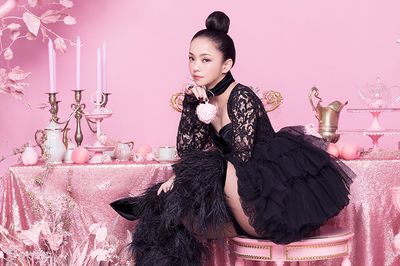Difference between revisions of "Amuro Namie"
(→SUITE CHIC - Onwards) |
Andrea1306 (talk | contribs) m (→Studio Albums) |
||
| (253 intermediate revisions by 30 users not shown) | |||
| Line 1: | Line 1: | ||
| − | [[ | + | [[File:Amuro Namie - Finally tour promo.jpg|thumb|550px|Amuro Namie promoting [[Namie Amuro Final Tour 2018 ~Finally~|namie amuro Final Tour 2018 ~Finally~]] (2018)]] |
| − | |||
<div align="justify"> | <div align="justify"> | ||
| − | '''Amuro Namie''' (安室奈美恵) is a Japanese | + | '''Amuro Namie''' (安室奈美恵) is a retired Japanese singer, dancer, and actress from [[wikipedia:Okinawa Prefecture|Okinawa]]. In 1992, she made her debut in a group called the [[SUPER MONKEYS]] comprised of her and her classmates from the [[Wikipedia:Okinawa Actors School|Okinawa Actors School]] with the single "[[Koi no Cute Beat / Mister U.S.A.]]". Amuro became the leader of the group, and found success after their single "[[Try Me ~Watashi wo Shinjite~|TRY ME ~Watashi wo Shinjite~]]". In 1996, Amuro and the SUPER MONKEYS were split up, and transferred to [[avex trax]]. Upon changing labels, debuting with the single "[[Body Feels Exit|Body Feels EXIT]]", and her first avex album, [[Sweet 19 Blues (album)|SWEET 19 BLUES]], selling over 3.3 million copies (at the time the highest selling album in Japanese music history), Amuro became a huge influence in Japanese pop in the 1990s, with her most devoted fans dubbed "Amuraa" (アムラー). Her biggest single, the ballad "[[Can You Celebrate|CAN YOU CELEBRATE?]]", was the top single of 1997 and became the highest-selling single by a Japanese female artist. After marriage and personal tragedies, Amuro adopted a more R&B/Hip-Hop based style of music, but returned to her signature dance-pop sound and experienced a comeback in popularity and sales in the latter half of her career. As of September 2018, Amuro has approximately sold 38,000,000 records in Japan. In September 2017, shortly after her 25th anniversary, Amuro announced her retirement for September 16, 2018, and ended her 26-year career with a series of promotions, including a best-of album and tour, a documentary series, a multi-city retrospective gallery, and a final performance in her home prefecture of Okinawa. |
==Profile== | ==Profile== | ||
* '''Name:''' Amuro Namie (安室奈美恵) | * '''Name:''' Amuro Namie (安室奈美恵) | ||
* '''Birthday:''' {{bda|1977|09|20|mf=yes}} | * '''Birthday:''' {{bda|1977|09|20|mf=yes}} | ||
| − | * '''Birthplace:''' [[Naha]], [[Okinawa Prefecture]] | + | * '''Birthplace:''' [[wikipedia:Naha|Naha]], [[wikipedia:Okinawa Prefecture|Okinawa Prefecture]], [[Japan]] |
* '''[[Blood Type]]:''' O | * '''[[Blood Type]]:''' O | ||
* '''Family:''' Parents (divorced), mother (deceased), two sisters, one brother, one son | * '''Family:''' Parents (divorced), mother (deceased), two sisters, one brother, one son | ||
| − | * '''Height:''' | + | * '''Height:''' 158cm (5'2") |
* '''Weight:''' 40kg (88 lbs) | * '''Weight:''' 40kg (88 lbs) | ||
* '''Measurements:''' B75 W58 H84 | * '''Measurements:''' B75 W58 H84 | ||
| − | * '''Ethnicity:''' 75% Japanese, 25% Italian | + | * '''Ethnicity:''' 75% Japanese, 25% Italian (debated; according to an autobiography written by her mother, she only knows that her father was of Western/European origin) |
| − | * '''Tattoos:''' Two on her left arm, two on her right wrist | + | * '''Tattoos:''' Two on her left arm, two on her right wrist (all since removed) |
| + | * '''Bands / Groups:''' | ||
| + | ** [[SUPER MONKEYS]] (1992-1995) | ||
| + | ** [[TK PRESENTS Konetto]] (1997) | ||
| + | ** [[Suite Chic|SUITE SHIC]] (2002-2003) | ||
| + | * '''Labels:''' | ||
| + | ** [[Toshiba-EMI]] (1993-1995) | ||
| + | ** [[avex trax]] (1995-2013) | ||
| + | ** [[Dimension Point]] (2013-2018) | ||
==Information== | ==Information== | ||
| − | |||
===Early Life - [[SUPER MONKEYS]]=== | ===Early Life - [[SUPER MONKEYS]]=== | ||
| − | [[Image:Amuro Namie with SUPER MONKEYS.jpg| | + | [[Image:Amuro Namie with SUPER MONKEYS.jpg|250px|thumb|Amuro Namie with the [[SUPER MONKEYS]] (1994)]] |
| + | [[Image:Amuro - Body Feels EXIT Promo.jpg|250px|thumb|Amuro Namie promoting "[[Body Feels Exit|Body Feels EXIT]]" (1995)]] | ||
| + | [[Image:1996SWEET 19 BLUES promo.jpg|250px|thumb|Amuro Namie promoting ''[[Sweet 19 Blues (album)|SWEET 19 BLUES]]'' (1996)]] | ||
| − | Amuro Namie | + | Amuro Namie is from the archipelago prefecture of Okinawa, the southernmost prefecture of Japan. Her mother, Taira Emiko (平良恵美子), was half-Western/European, and she has three siblings. When Amuro was four, her parents divorced and her mother became the sole provider of her and her three children. Amuro was influenced by [[Wikipedia:Janet Jackson|Janet Jackson]] when she was young and wanted to dance and sing like her. To fulfill this dream, Amuro tried to enter the prestigious [[Okinawa Actors' School]]. However, she did not have enough money at the time to enter the school, so she made a request to the principal of the school, Makino Masayuki, who granted her a scholarship to attend. Amuro faced a commute time of one and a half hours to get to school. |
| − | Amuro was made a part of an idol group alongside several of her classmates from the school and formed the group [[SUPER MONKEYS]]. The group debuted in February 1992 under the label [[Toshiba EMI]] with the single "[[Koi no Cute Beat / Mister U.S.A.]]". One member, [[Makino Anna]], was even the principal's daughter. After Makino left, Amuro became the leader of the group; slowly growing in prominence. This is most illustrated by the group changing their name to '''Amuro Namie with SUPER MONKEYS'''. The group did not see real success until their cover of "[[Try Me ~Watashi wo Shinjite~|TRY ME ~Watashi wo Shinjite~]]", which peaked at #8. By the release of "[[Taiyou no Season|Taiyou no SEASON]]", the other members' roles were so small that Amuro was solely credited with the song and the other members acted as back-up | + | Amuro was made a part of an idol group alongside several of her classmates from the school and formed the group [[SUPER MONKEYS]]. The group debuted in February 1992 under the label [[Toshiba EMI]] with the single "[[Koi no Cute Beat / Mister U.S.A.]]". One member, [[Makino Anna]], was even the principal's daughter. After Makino left, Amuro became the leader of the group; slowly growing in prominence. This is most illustrated by the group changing their name to '''Amuro Namie with SUPER MONKEYS'''. The group did not see real success until their cover of "[[Try Me ~Watashi wo Shinjite~|TRY ME ~Watashi wo Shinjite~]]", which peaked at #8. By the release of "[[Taiyou no Season|Taiyou no SEASON]]", the other members' roles were so small that Amuro was solely credited with the song and the other members acted as back-up dancers for her. |
===Avex - Marriage=== | ===Avex - Marriage=== | ||
| − | |||
| − | In 1995 Amuro and her bandmates | + | In 1995 Amuro and her bandmates moved labels from [[Toshiba EMI]] to [[avex trax]] after meeting with [[Komuro Tetsuya]] and [[Max Matsuura]]. However, the SUPER MONKEYS were dissolved in favor of two acts: Amuro as a solo project and the remaining members in a new group called [[MAX]]. [[MAX]] debuted in May 1995 with "[[Koisuru Velfarre Dance ~Saturday Night~]]", which debuted at #91 on the [[Oricon]] charts. Amuro and MAX would continue to work together throughout the ''[[Sweet 19 Blues|SWEET 19 BLUES]]'' recordings. Amuro first premièred "Body Feels EXIT" at the [[Avex Dance Matrix '95 TK DANCE CAMP]] alongside MAX as her dancers. They continued to work together, appearing in Amuro's television performances. MAX would then appear in Amuro's next single "[[Chase the Chance]]". |
| − | Her | + | Her later singles "[[Don't Wanna Cry|Don't wanna cry]]" and "[[You're My Sunshine|You're my sunshine]]", both #1 singles, solidified her success, culminating in her debut album under avex, entitled ''[[Sweet 19 Blues (album)|SWEET 19 BLUES]]''; not only did it reach #1, but went on to sell over 3.3 million copies, at the time being the best-selling album in Japanese history (a record since beaten by [[Hikaru Utada]]'s [[First Love]] in 1999, with over 7 million copies). Due to Amuro's success and image, she soon became a fashion leader in Japan; followers of her style were labeled as 'Amura' (a pun on her name). The stereotypical 'Amura' had long hair dyed brown, wore short mini-skirts, had thin eyebrows and wore "atsuzoko" thick-soled boots. |
| − | Amuro found the greatest success in her career in 1997 with the single "[[Can You Celebrate|CAN YOU CELEBRATE?]]". This ballad single was used as the [[Dorama|dorama]] ''[[Virgin Road]]''<nowiki>'</nowiki>s theme song, and became the #1 single of 1997 due to its massive popularity. Amuro's success during this | + | Amuro found the greatest success in her career in 1997 with the single "[[Can You Celebrate|CAN YOU CELEBRATE?]]". This ballad single was used as the [[Dorama|dorama]] ''[[Virgin Road]]''<nowiki>'</nowiki>s theme song, and became the #1 single of 1997 due to its massive popularity. Amuro's success during this period also resulted in a massive increase in interest in artists from Okinawa. |
| − | On October 22nd 1997, Amuro shocked fans and members of the press with the announcement that she had married label-mate [[SAM]], a member of the avex dance group [[TRF]]. Furthermore, she announced that she was three months pregnant and | + | On October 22nd, 1997, at the peak of her popularity, Amuro shocked fans and members of the press with the announcement that she had married label-mate [[SAM]], a member of the avex dance group [[TRF]]. Furthermore, she announced that she was three months pregnant and announced on a one-year hiatus to focus on her pregnancy. In the meantime, two releases were made to tide fans over: a re-issue of her "[[Can You Celebrate|CAN YOU CELEBRATE?]]" single, and her first best-of collection, entitled ''[[181920]]''. On May 19th, 1998, her son, Haruto (温大), was born. |
===Return to Industry - Tragedy=== | ===Return to Industry - Tragedy=== | ||
| − | |||
| − | |||
| − | |||
| − | After | + | After giving birth to her son, Amuro returned to the music scene in December 1998 with the ballad "[[I Have Never Seen|I HAVE NEVER SEEN]]", used as the dorama ''[[Yonige-ya Honpo]]''<nowiki>'</nowiki>s theme song, which reached #1 on the charts. Three months later, Amuro released a second single, another ballad called "[[Respect the Power of Love|RESPECT the POWER OF LOVE]]", on March 17th 1999. However, tragedy struck when on the day of the single's release, her mother was brutally murdered by Amuro's step-uncle Taira Kenji in Okinawa. According to press statements, Taira Emiko was walking with her second husband (Amuro's step-father) when Taira Kenji repeatedly ran over the couple and assaulted them with an axe. While Amuro's step-father survived the ordeal, Taira Kenji later committed suicide after the event. Amuro cancelled all promotions for the single and headed home to Okinawa. |
| − | Amuro | + | After taking another break from the industry (Amuro later left a message to her fans in January 2000 stating that she had been seriously thinking of retiring, however was convinced not to by the kind words from her fans), Amuro returned with the singles "[[Toi et Moi|toi et moi]]" (''[[wikipedia:Pokémon: The Movie 2000|Pokémon: The Movie 2000]]''<nowiki>'</nowiki>s ending theme song) and "[[Something 'Bout the Kiss|SOMETHING 'BOUT THE KISS]]". "SOMETHING 'BOUT THE KISS" was Amuro's first real step towards an R&B-oriented sound: the song was the first of hers to be produced by American producer [[wikipedia:Dallas Austin|Dallas Austin]], known for producing big-name American acts such as Madonna, Janet Jackson, Boys II Men, and TLC, whom Amuro would later collaborate with in future projects. |
| − | + | After her music style began to change from dance-pop to R&B, on top of her private setbacks made public, Amuro's sales had declined significantly, however she had a hit single in 2000 with "[[Never End|NEVER END]]", which sold over 640,000 copies, and was noted for being the theme song for the 26th G8 Summit, held in Okinawa; Amuro also performed the single at the summit. By the end of 2000, Amuro released two albums within one year, ''[[Genius 2000|GENIUS 2000]]'' and ''[[Break the Rules|break the rules]]'', both of which signaled a change in musical direction from her debut. In 2001, Amuro released her first single, "[[Say the Word|say the word]]", that featured lyrics written by Amuro herself. Amuro also participated in the 9/11 charity music project [[song+nation]], founded by [[Komuro Tetsuya]], with [[m-flo]] rapper [[VERBAL]] on the song "[[Lovin' It|lovin' it]]", released as a single on December 27th; it became the last collaboration between Amuro and Komuro for another 17 years. | |
| − | |||
| − | + | ===[[SUITE CHIC]] - [[Style (Amuro Namie)|STYLE]]=== | |
| + | In late 2001, Amuro was announced to be a part of a collaborative hip-hop/R&B project called [[SUITE CHIC]] in which she was the main vocalist. After releasing a special single written for her fans, "[[I Will (Amuro Namie)|I WILL]]", Amuro's second best-of collection ''[[Love Enhanced Single Collection|LOVE ENHANCED♥ single collection]]'' was released, featuring re-arrangements and re-recordings of her solo singles from 1998 to 2002. | ||
| − | 2002 saw two more activities from Amuro: the release of "[[Wishing on the Same Star|Wishing On The Same Star]]" (film ''[[Inochi]]''<nowiki>'</nowiki> | + | On July 10, 2002, news came that Amuro had divorced her husband, SAM, after five years, who initially received sole custody over their son. At this time, Amuro was dealing with declining popularity among the rise of other Japanese singers, such as [[Utada Hikaru]] and labelmate [[Hamasaki Ayumi]], and her much-publicized personal troubles. 2002 saw two more activities from Amuro: the release of "[[Wishing on the Same Star|Wishing On The Same Star]]" (for the film ''[[Inochi]]''<nowiki>'</nowiki> originally written by American songwriter [[wikipedia:Diane Warren|Diane Warren]]) and her debut SUITE CHIC release, "[[Good Life / Just Say So|GOOD LIFE / Just Say So]]". This single did not chart anywhere near where Amuro had charted for the last eight years (only peaking at #35). |
| − | Amuro | + | 2003, however, was a more productive year for Amuro. Between her solo work and her SUITE CHIC project, she released four singles and two albums, most of which continued her dive into R&B and hip-hop. These projects began a long working relationship with Japanese singer-songwriter [[MICHICO|michico]], who would collaborate with Amuro for numerous singles that would define Amuro's style during her R&B era. Her sixth album, ''[[Style (Amuro Namie)|STYLE]]'' was her first hip-hop and R&B-heavy album and featured no contributions from [[Komuro Tetsuya]]. It was the lowest-charting album of her career, peaking at #4, and selling less than a quarter of a million copies in Japan. To promote her the album, Amuro embarked on her first international tour, [[Namie Amuro So Crazy Tour Featuring Best Singles 2003-2004|namie amuro SO CRAZY tour featuring BEST singles 2003-2004]], which made stops in Taiwan and South Korea (her only tour that featured South Korea in its schedule). At the end of 2003, her SUITE CHIC side project was dissolved; in future interviews, Amuro expressed interest in reviving the project, an idea that would eventually not materialize. She also appeared on the annual New Year's television special ''[[Kohaku Uta Gassen]]'' for the last time until 2017, for a total of nine consecutive appearances. |
| + | <!--- | ||
| + | ===[[Queen of Hip-Pop]] - [[BEST FICTION]]=== | ||
| − | + | ===[[Past Future|PAST>FUTURE]] - [[Uncontrolled]] and 20th Anniversary=== | |
| − | + | ===[[Feel (Amuro Namie)|FEEL]] - 25th Anniversary and Retirement=== | |
| − | + | ---> | |
| − | |||
| − | |||
| − | === | ||
| − | |||
| − | |||
| − | |||
| − | |||
| − | |||
</div> | </div> | ||
| − | |||
==Discography== | ==Discography== | ||
| − | + | [[Image:Amuro - LOVE ENHANCED Promo.jpg|250px|thumb|Amuro Namie promoting ''[[Love Enhanced Single Collection|LOVE ENHANCED♥ single collection]]'' (2002)]] | |
| − | [[Image:Amuro - LOVE ENHANCED Promo.jpg| | + | [[Image:2003stylepromo.jpg|250px|thumb|Amuro Namie promoting ''[[Style (Amuro Namie)|STYLE]]'' (2003)]] |
| − | [[Image:2003stylepromo.jpg| | + | [[Image:2005Queen of Hip-Promo.jpg|250px|thumb|Amuro Namie promoting ''[[Queen of Hip-Pop]]'' (2005)]] |
| − | [[Image:2005Queen of Hip-Promo.jpg| | + | [[Image:2006CAN'T SLEEP, CAN'T EAT, I'M SICKPromo.jpg|250px|thumb|Amuro Namie promoting "[[Can't Sleep, Can't Eat, I'm Sick / Ningyo|CAN'T SLEEP, CAN'T EAT, I'M SICK / Ningyo]]" (2006)]] |
| − | [[Image:2006CAN'T SLEEP, CAN'T EAT, I'M SICKPromo.jpg| | + | [[Image:Live Style Promo.jpg|250px|thumb|Amuro Namie promoting ''[[Namie Amuro Best Tour "Live Style 2006"|namie amuro BEST tour "Live Style 2006"]]'' (2007)]] |
| − | [[Image:Live Style Promo.jpg| | + | [[Image:Amuro Namie - BEST FICTION promo.jpg|250px|thumb|Amuro Namie promoting ''[[Best Fiction|BEST FICTION]]'' (2008)]] |
| − | [[Image: | + | [[Image:Namie amuro wild promotion.jpg|250px|thumb|Amuro Namie promoting "[[Wild / Dr.|WILD / Dr.]]" (2009)]] |
| − | [[Image:Namie amuro wild promotion.jpg| | + | [[Image:BreakItPROMO.jpg|250px|thumb|Amuro Namie promoting "[[Break It / Get Myself Back]]" (2010)]] |
| − | [[Image:BreakItPROMO.jpg| | + | [[Image:Namie Amuro - Checkmate! (Promotional 2).jpg|thumb|250px|Amuro Namie promoting ''[[Checkmate!]]'' (2011)]] |
| − | [[Image:Namie Amuro - Checkmate! (Promotional 2).jpg|thumb| | + | [[Image:Namie Amuro - Damage (Promotional).jpg|thumb|250px|Amuro Namie promoting "[[Damage (Amuro Namie)|Damage]]" (2012)]] |
| − | + | [[File:Namie Amuro - Dear Diary Fighter promo.jpg|thumb|250px|Amuro Namie promoting "[[Dear Diary / Fighter]]" (2016)]] | |
| + | [[File:Amuro Namie - Finally promo.jpg|thumb|250px|Amuro Namie promoting ''[[Finally (Amuro Namie album)|Finally]]'' (2017)]] | ||
| − | ===Albums=== | + | ===Studio Albums=== |
| − | * [1995.10.16] [[Dance Tracks Vol | + | * [1995.10.16] [[Dance Tracks Vol.1]] |
| − | * [1996.07.22] [[Sweet 19 Blues | + | * [1996.07.22] [[Sweet 19 Blues|SWEET 19 BLUES]] |
* [1997.07.24] [[Concentration 20]] | * [1997.07.24] [[Concentration 20]] | ||
* [2000.01.26] [[Genius 2000|GENIUS 2000]] | * [2000.01.26] [[Genius 2000|GENIUS 2000]] | ||
| Line 92: | Line 90: | ||
* [2009.12.16] [[Past Future|PAST < FUTURE]] | * [2009.12.16] [[Past Future|PAST < FUTURE]] | ||
* [2012.06.27] [[Uncontrolled]] | * [2012.06.27] [[Uncontrolled]] | ||
| + | * [2013.07.10] [[Feel (Amuro Namie)|FEEL]] | ||
| + | * [2015.06.10] [[Genic|_genic]] | ||
===Best Albums=== | ===Best Albums=== | ||
| − | + | * [1998.01.28] [[181920]] | |
| − | *[1998.01.28] [[181920]] | + | * [2002.03.13] [[Love Enhanced Single Collection|LOVE ENHANCED ♥ single collection]] |
| − | *[2002.03.13] [[Love Enhanced Single Collection|LOVE | + | * [2004.03.31] [[181920|181920 & films]] <small>(re-issue)</small> |
| − | *[2004.03.31] [[181920|181920 & films]] | + | * [2008.07.30] [[Best Fiction|BEST FICTION]] |
| − | *[2008.07.30] [[Best Fiction|BEST FICTION]] | + | * [2011.04.27] [[Checkmate!]] |
| − | *[2011.04.27] [[Checkmate (Amuro Namie)| | + | * [2014.06.04] [[Ballada]] |
| + | * [2017.11.08] [[Finally (Amuro Namie)|Finally]] | ||
| + | |||
| + | ===Live Albums=== | ||
| + | * [2013.03.27] [[Namie Amuro 5 Major Domes Tour 2012 ~20th Anniversary Best~|namie amuro 5 Major Domes Tour 2012 ~20th Anniversary Best~]] | ||
| + | * [2014.03.26] [[Namie Amuro Feel Tour 2013|namie amuro FEEL tour 2013]] | ||
| + | * [2015.02.11] [[Namie Amuro Live Style 2014|namie amuro LIVE STYLE 2014]] | ||
| + | * [2015.03.11] [[Live Style 2014 ~Live Ballada~|LIVE STYLE 2014~LIVE Ballada~]] | ||
| + | * [2016.03.02] [[Namie Amuro Livegenic 2015-2016|namie amuro LIVEGENIC 2015-2016]] | ||
| + | * [2019.06.16] [[namie amuro 25th ANNIVERSARY LIVE in OKINAWA at Ginowan Seaside Park 2017.9.16|namie amuro 25th ANNIVERSARY LIVE in OKINAWA at Ginowan Seaside Park 2017.9.16]] <small>(Digital Exclusive)</small> | ||
| + | * [2019.06.16] [[namie amuro Final Tour 2018 ~Finally~ at Tokyo Dome 2018.6.3|namie amuro Final Tour 2018 ~Finally~ at Tokyo Dome 2018.6.3]] <small>(Digital Exclusive)</small> | ||
===Singles=== | ===Singles=== | ||
| Line 140: | Line 150: | ||
*[2011.12.07] [[Sit! Stay! Wait! Down! / Love Story]] | *[2011.12.07] [[Sit! Stay! Wait! Down! / Love Story]] | ||
*[2012.03.21] [[Go Round / Yeah-Oh|Go Round / YEAH-OH]] | *[2012.03.21] [[Go Round / Yeah-Oh|Go Round / YEAH-OH]] | ||
| + | *[2013.03.06] [[Big Boys Cry / Beautiful]] | ||
| + | *[2014.01.29] [[Tsuki (Amuro Namie)|TSUKI]] | ||
| + | *[2014.11.12] [[Brighter Day|BRIGHTER DAY]] | ||
| + | *[2015.12.02] [[Red Carpet]] | ||
| + | *[2016.05.18] [[Mint (Amuro Namie)|Mint]] | ||
| + | *[2016.07.27] [[Hero (Amuro Namie)|Hero]] | ||
| + | *[2016.10.26] [[Dear Diary / Fighter]] | ||
| + | *[2017.05.31] [[Just You and I]] | ||
| + | |||
| + | ===Digital Singles=== | ||
| + | * [2012.09.12] [[Hot Girls|Hot Girls -SMIDI CLUB REMIX-]] | ||
| + | * [2012.10.24] [[Damage (Amuro Namie)|Damage]] | ||
| + | * [2012.12.05] [[Damage (Amuro Namie)|Damage -80KIDZ Remix-]] | ||
| + | * [2012.12.22] [[Love Story (Amuro Namie)|Love Story (Xmas Music Box Ver.)]] | ||
| + | * [2013.03.13] [[Big Boys Cry]] | ||
| + | * [2013.04.28] [[Contrail]] | ||
| + | * [2013.07.03] [[Hands on Me|Hands On Me]] | ||
| + | * [2013.07.10] [[Heaven (Amuro Namie)|Heaven]] | ||
| + | * [2013.10.02] [[Neonlight Lipstick]] | ||
| + | * [2013.10.09] [[Ballerina]] | ||
| + | * [2014.11.05] [[Brighter Day]] | ||
| + | * [2015.07.01] [[wikipedia:What I Did for Love (David Guetta song)|What I Did for Love]] <small>([[wikipedia:David Guetta|David Guetta]] feat. Amuro Namie)</small> | ||
| + | * [2015.11.25] [[Red Carpet]] | ||
| + | * [2015.11.25] [[Black Make Up]] | ||
| + | * [2018.02.11] [[Hope (Amuro Namie)|Hope]] | ||
| + | * [2018.04.19] [[Body Feels Exit|Body Feels EXIT]] | ||
| − | === Vinyls === | + | ===Music Cards=== |
| + | * [2016.12.20] [[Christmas Wish]] | ||
| + | |||
| + | ===Vinyls=== | ||
* [1995.xx.xx] [[Body Feels Exit|Body Feels EXIT]] | * [1995.xx.xx] [[Body Feels Exit|Body Feels EXIT]] | ||
* [1996.xx.xx] [[Chase the Chance / Don't Wanna Cry / You're My Sunshine|Chase the Chance / Don't wanna cry / You're my sunshine]] | * [1996.xx.xx] [[Chase the Chance / Don't Wanna Cry / You're My Sunshine|Chase the Chance / Don't wanna cry / You're my sunshine]] | ||
| − | * [ | + | * [1997.xx.xx] [[Can You Celebrate|CAN YOU CELEBRATE?]] |
| + | * [1999.11.19] [[Something 'Bout the Kiss|SOMETHIN 'BOUT THE KISS]] | ||
| + | * [2000.02.16] [[Love 2000 (Amuro Namie)|Love 2000]] | ||
| + | * [2001.01.24] [[No More Tears|no more tears]] | ||
* [2001.xx.xx] [[Say the Word|Say the word]] | * [2001.xx.xx] [[Say the Word|Say the word]] | ||
| + | * [2014.12.24] [[Ballada (vinyl)|Ballada]] | ||
| + | * [2016.08.19] [[Mint (Amuro Namie)|Mint]] | ||
| + | * [2016.08.19] [[Hero (Amuro Namie)|Hero]] | ||
| − | === | + | ===Video Releases=== |
* [1996.11.14] [[Namie Amuro World|NAMIE AMURO WORLD]] | * [1996.11.14] [[Namie Amuro World|NAMIE AMURO WORLD]] | ||
* [1996.12.04] [[Amuro Namie First Anniversary|AMURO NAMIE FIRST ANNIVERSARY]] | * [1996.12.04] [[Amuro Namie First Anniversary|AMURO NAMIE FIRST ANNIVERSARY]] | ||
| Line 155: | Line 200: | ||
* [2000.08.18] [[Namie Amuro Tour "Genius 2000"|NAMIE AMURO TOUR "GENIUS 2000"]] | * [2000.08.18] [[Namie Amuro Tour "Genius 2000"|NAMIE AMURO TOUR "GENIUS 2000"]] | ||
* [2001.03.07] [[Filmography|filmography]] | * [2001.03.07] [[Filmography|filmography]] | ||
| − | |||
| − | |||
| − | |||
| − | |||
| − | |||
| − | |||
| − | |||
* [2002.03.13] [[181920 Films + Filmography|181920 films + filmography]] | * [2002.03.13] [[181920 Films + Filmography|181920 films + filmography]] | ||
* [2002.12.11] [[Best Clips|BEST CLIPS]] | * [2002.12.11] [[Best Clips|BEST CLIPS]] | ||
* [2003.11.19] [[Namie Amuro Tour 2001 Break the Rules|namie amuro tour 2001 break the rules]] | * [2003.11.19] [[Namie Amuro Tour 2001 Break the Rules|namie amuro tour 2001 break the rules]] | ||
| + | * [2004.01.28] [[Love Enhanced Single Collection|LOVE ENHANCED♥ single collection]] | ||
| + | * [2004.01.28] [[181920]] | ||
* [2004.09.23] [[Namie Amuro So Crazy Tour Featuring Best Singles 2003-2004|namie amuro SO CRAZY tour featuring BEST singles 2003-2004]] | * [2004.09.23] [[Namie Amuro So Crazy Tour Featuring Best Singles 2003-2004|namie amuro SO CRAZY tour featuring BEST singles 2003-2004]] | ||
| − | |||
| − | |||
| − | |||
| − | |||
* [2005.12.07] [[Filmography 2001-2005|FILMOGRAPHY 2001-2005]] | * [2005.12.07] [[Filmography 2001-2005|FILMOGRAPHY 2001-2005]] | ||
| − | |||
* [2006.03.15] [[Space of Hip-Pop -Namie Amuro Tour 2005-|Space of Hip-Pop -namie amuro tour 2005]] | * [2006.03.15] [[Space of Hip-Pop -Namie Amuro Tour 2005-|Space of Hip-Pop -namie amuro tour 2005]] | ||
* [2007.02.21] [[Namie Amuro Best Tour "Live Style 2006"|namie amuro BEST tour "Live Style 2006"]] | * [2007.02.21] [[Namie Amuro Best Tour "Live Style 2006"|namie amuro BEST tour "Live Style 2006"]] | ||
| Line 177: | Line 212: | ||
* [2009.09.09] [[Namie Amuro Best Fiction Tour 2008-2009|namie amuro BEST FICTION TOUR 2008-2009]] | * [2009.09.09] [[Namie Amuro Best Fiction Tour 2008-2009|namie amuro BEST FICTION TOUR 2008-2009]] | ||
* [2010.12.15] [[Namie Amuro Past Future Tour 2010|namie amuro PAST<FUTURE tour 2010]] | * [2010.12.15] [[Namie Amuro Past Future Tour 2010|namie amuro PAST<FUTURE tour 2010]] | ||
| − | |||
| − | |||
| − | |||
* [2011.12.21] [[Namie Amuro Live Style 2011|namie amuro LIVE STYLE 2011]] | * [2011.12.21] [[Namie Amuro Live Style 2011|namie amuro LIVE STYLE 2011]] | ||
| + | * [2013.02.27] [[Namie Amuro 5 Major Domes Tour 2012 ~20th Anniversary Best~|namie amuro 5 Major Domes Tour 2012 ~20th Anniversary Best~]] (namie amuro 5大ドームTOUR 2012 ~20th Anniversary Best~) | ||
| + | * [2014.02.26] [[Namie Amuro Feel Tour 2013|namie amuro FEEL tour 2013]] | ||
| + | * [2015.02.11] [[Namie Amuro Live Style 2014|namie amuro LIVE STYLE 2014]] | ||
| + | * [2015.09.05] [[Golden Touch -10 Million Views New Edit-]] <small>(LIVEGENIC Venues Only)</small> | ||
| + | * [2016.03.02] [[Namie Amuro Livegenic 2015-2016|namie amuro LIVEGENIC 2015-2016]] | ||
| + | * [2017.05.03] [[Namie Amuro Live Style 2016-2017|namie amuro LIVE STYLE 2016-2017]] | ||
| + | * [2018.08.29] [[Namie Amuro Final Tour 2018 ~Finally~|namie amuro Final Tour 2018 ~Finally~]] | ||
| − | === | + | ===Compilations / Other === |
| − | * [ | + | * [1996.10.30] [[m.c.A.T|m.c.A・T]] - "[[Thunder Party]]" (#2 "Joy" feat. Amuro Namie) |
| − | * [ | + | * [1997.01.01] [[Komuro Tetsuya|TK FAMILY]] - "[[You Are the One|YOU ARE THE ONE]]" |
| + | * [2001.12.27] Amuro Namie & [[VERBAL]] - "[[Lovin' It|lovin' it]]" | ||
| + | * [2002.03.06] ''[[Song+Nation 2 Trance|song+nation 2 trance]]'' (#4 "lovin' it (tatsumaki remix)") | ||
| + | * [2002.09.19] ''[[Inochi: Original Soundtrack]]'' (#9 "Wishing On The Same Star (Movie Version)", #10 "Wishing On The Same Star (Movie Version Instrumental)") | ||
| + | * [2003.09.18] [[ZEEBRA]] - ''[[Tokyo's Finest|TOKYO'S FINEST]]'' (#12 "AFTER PARTY" feat. Amuro Namie) | ||
| + | * [2005.01.19] [[ZEEBRA]] - ''[[THE Live Animal'03 - Tokyo's Finest|THE LIVE ANIMAL'03 - TOKYO'S FINEST]]'' (#16 "AFTER PARTY" feat. Amuro Namie) | ||
| + | * [2005.03.24] [[JHETT aka YAKKO for AQUARIUS]] - ''[[JHETT]]'' (#3 "Do or Die" feat. Amuro Namie) | ||
| + | * [2005.03.30] ''[[SUPER EURO GROOVE]]'' (#15 "J-EURO MEGA-MIX") | ||
| + | * [2005.08.24] [[JHETT aka YAKKO for AQUARIUS]] - ''[[JHETT|JHETT BLACK EDITION]]'' (#2 "Do or Die [BACH LOGIC Remix feat. NORISHAM-X]" feat. Amuro Namie) | ||
| + | * [2006.02.15] [[ZEEBRA]] - ''[[The New Beginning]]'' (#15 "Do What U Gotta Do" feat. [[AI (singer)|AI]], Amuro Namie & [[Mummy-D]]) | ||
| + | * [2007.03.28] [[m-flo]] - ''[[Cosmicolor|COSMICOLOR]]'' (#3 "Luvotomy" loves Amuro Namie) | ||
| + | * [2007.09.19] [[ZEEBRA]] - ''[[ZEEBRA Japan Tour Final "The Live Animal '06 -The New Beginning-"]]'' (#19 "Do What U Gotta Do" feat. [[AI (singer)|AI]], Amuro Namie & [[Mummy-D]]) | ||
| + | * [2007.09.27] [[m-flo]] - ''[[Electricolor -Complete Remix-|electriCOLOR -COMPLETE REMIX-]]'' (#4 "Luvotomy -Camp Three-o-three remix-" loves Amuro Namie) | ||
| + | * [2007.10.31] [[m-flo]] - ''[[m-flo Tour 2007 "Cosmicolor" @ Yokohama Arena]]'' (#26 "Luvotomy" loves Amuro Namie) | ||
| + | * [2008.05.xx] [[DOUBLE (singer)|DOUBLE]] x Amuro Namie - "[[Black Diamond|BLACK DIAMOND]]" | ||
| + | * [2008.05.28] [[DOUBLE]] - ''[[The Best Collaborations|THE BEST COLLABORATIONS]]'' (#1 "BLACK DIAMOND") | ||
| + | * [2008.08.06] ''[[House Nation Best Gig]]'' (#3 "What a Feeling (Shinichi Osawa Remix)") | ||
| + | * [2008.09.17] [[ZEEBRA]] - ''[[The Anthology]]'' (Disc 2 #12 "Do What U Gotta Do" feat. [[AI (singer)|AI]], Amuro Namie & [[Mummy-D]]) | ||
| + | * [2008.10.29] [[DJ KAORI]] - ''[[DJ KAORI's JMix II|DJ KAORI'S JMIX II]]'' (#1 "Baby Don't Cry") | ||
| + | * [2009.01.29] ''[[Love (Various Artists)|.LOVE]]'' (#9 "CAN YOU CELEBRATE?") | ||
| + | * [2009.02.18] ''[[Best Hit! Nittere 55]]'' (#7 "I HAVE NEVER SEEN") | ||
| + | * [2009.02.25] ''[[Karaage!!]]'' (#6 "Baby Don't Cry") | ||
| + | * [2009.03.04] ''[[Pikachu The Movie Song Best 1998-2008]]'' (#8 "toi et moi") | ||
| + | * [2009.03.04] ''[[20 Years 200 Hits Complete Best + A Love HiQuality CD Edition Box|20years 200hits Complete Best + a LOVE HiQualityCD EditionBOX]]'' (#12 "Body Feels EXIT", #23 "CAN YOU CELEBRATE?", #37 "RESPECT the POWER OF LOVE", #46 "NEVER END", #92 "ALL FOR YOU", #103 "WANT ME, WANT ME", #118 "CAN'T SLEEP, CAN'T EAT, I'M SICK", #135 "Baby Don't Cry") | ||
| + | * [2009.04.29] [[ravex]] - ''[[Trax|trax]]'' (#2 "ROCK U" feat. Amuro Namie) | ||
| + | * [2009.09.02] [[DJ Caroline D'Amore]] - ''[[J-Girls' Celebrity Mix]]'' (#1 "What a Feeling [J-GIRLS' CELEBRITY MIX VER.]") | ||
| + | * [2009.11.04] ''[[Love More|.LOVE more]]'' (#14 "Baby Don't Cry") | ||
| + | * [2009.11.25] [[DJ KAORI]] - ''[[DJ KAORI's JMix III|DJ KAORI'S JMIX III]]'' (#6 "WHAT A FEELING") | ||
| + | * [2009.11.25] ''[[Hit Songs ~Yasashii Hikari / Unmei no Hito~ Hit Songs Orgel Collection|Hit Songs ~Yasashii Hikari / Unmei no Hito~ Hit Songs orgel collection]]'' (#12 "Baby Don't Cry") | ||
| + | * [2010.03.17] ''[[Mune Kyun 90's ~Hitori de Kikitai Koi no Uta~]]'' (Disc 2 #1 "SWEET 19 BLUES") | ||
| + | * [2010.03.24] ''[[Inuyasha Best Song History]]'' (Disc 1 #13 "Come") | ||
| + | * [2010.03.31] [[AI (singer)|AI]] - "[[Fake (AI)|FAKE]]" feat. Amuro Namie | ||
| + | * [2010.04.21] [[DJ HASEBE]] - ''[[Woofin Presents "Candyman" Mixed by DJ HASEBE|Woofin Presents "CANDYMAN" Mixed by DJ HASEBE]]'' (#24 "Ups & Downs" duet with [[Nao'ymt]]) | ||
| + | * [2010.07.21] [[Suzuki Ami]] - ''[[Blooming|BLOOMING]]'' (#6 ''ROCK U'' feat. Amuro Namie) | ||
| + | * [2010.12.01] [[AI (singer)|AI]] - ''[[The Last A.I.|THE LAST A.I.]]'' (#1 "FAKE" feat. Amuro Namie) | ||
| + | * [2011.03.16] [[VERBAL]] - ''[[Visionair|VISIONAIR]]'' (#2 "BLACK OUT" feat. [[wikipedia:Lil Wayne|Lil Wayne]] & Amuro Namie) | ||
| + | * [2011.10.05] [[DOUBLE]] - ''[[Woman (DOUBLE)|WOMAN]]'' (#14 "BLACK DIAMOND ~TinyVoice Electr!ck Remix~") | ||
| + | * [2012.01.11] ''[[Love Tender|.LOVE tender]]'' (#9 "ALL FOR YOU") | ||
| + | * [2012.03.07] ''[[Dramatic Tunes]]'' (Disc 2 #1 "Baby Don't Cry") | ||
| + | * [2012.10.17] ''[[Million ~Best of 90's J-Pop~ Blue|MILLION ~BEST OF 90's J-POP~ BLUE]]'' (#1 "CAN YOU CELEBRATE?") | ||
| + | * [2013.06.12] [[wikipedia:TLC (group)|TLC]] - "[[wikipedia:Waterfalls (TLC song)|Waterfalls (20th Anniversary Version)]]" | ||
| + | * [2013.06.19] [[wikipedia:TLC (group)|TLC]] - ''[[wikipedia:TLC 20: 20th Anniversary Hits|TLC 20 ~20th Anniversary Hits~]]'' (#1 "Waterfalls" with Namie Amuro) | ||
| + | * [2013.09.25] [[Komuro Tetsuya]] - ''[[Defb Edm 2013 Summer|DEBF EDM 2013 SUMMER]]'' (#8 "You're my sunshine (2013 SUMMER)") | ||
| + | * [2014.04.02] [[Hirai Ken]] - "[[Grotesque]]" feat. Amuro Namie | ||
| + | * [2014.05.28] [[DOUBLE (singer)|DOUBLE]] - ''[[Single Best (DOUBLE)|SINGLE BEST]]'' (Disc 2 #10 "BLACK DIAMOND") | ||
| + | * [2014.11.15] [[Jolin Tsai]] - ''[[Pei (Jolin Tsai album)|PLAY]]'' (#5 "I'm Not Yours" feat. Amuro Namie) | ||
| + | * [2015.07.01] [[wikipedia:David Guetta|David Guetta]] - "[[What I Did for Love]]" feat. Amuro Namie | ||
| + | * [2015.09.16] [[Crystal Kay]] - "[[Revolution (Crystal Kay)|REVOLUTION]]" feat. Amuro Namie | ||
| + | * [2015.09.30] [[SHOW-YA]] - ''[[Progress (SHOW-YA)|PROGRESS]]'' (#12 "Genkai LOVERS" feat. Namie Amuro) | ||
| + | * [2015.11.25] [[AI (singer)|AI]] - ''[[The Best (AI)|THE BEST]]'' (#12 "FAKE" feat. Amuro Namie) | ||
| + | * [2015.12.16] [[Crystal Kay]] - ''[[Shine (Crystal Kay)|Shine]]'' (#5 "REVOLUTION" feat. Amuro Name) | ||
| + | * [2016.11.02] [[AI (singer)|AI]] - ''[[The Feat. Best|THE FEAT. BEST]]'' (CD2 #4 Amuro Namie - "Wonder Woman" feat. AI & Tsuchiya Anna, #7 "FAKE [BACHLOGIC Remix]" feat. Amuro Namie) | ||
| + | * [2018.01.17] [[m-flo]] - "[[Back2thefutureep1|BACK2THEFUTUREEP1]]" (#2 "Luvotomy (TeddyLoid Remix)") | ||
| + | * [2018.08.01] [[DOUBLE (singer)|DOUBLE]] - [[Latest Single Best]] (Disc 2 - #11 "BLACK DIAMOND" / DOUBLE & Amuro Namie) | ||
| + | * [2019.10.16] [[t-Ace]] - [[Sweet 19 Blues ~Ore ni wa Toi~]] feat. '''Amuro Namie''' | ||
| − | === | + | ==Filmography== |
| − | * [ | + | ===Dramas=== |
| − | + | * [1994] [[Toki wo Kakeru Shoujo]] (時をかける少女) | |
| − | * [ | + | * [1996] [[That's Cunning! Shijou Saidai no Sakusen?]] (That's カンニング! 史上最大の作戦?) |
| − | * [ | + | * [2000] [[Yonigeya Honpo]] (夜逃げ屋本舗) |
| − | === | + | ==Publications== |
| − | + | ===Books=== | |
| + | [[Image:Pocket Namie Amuro.jpg|100px]] | ||
| − | * [ | + | * [2009.10] [[Pocket Amuro Namie]] |
| − | |||
| − | |||
| − | |||
| − | |||
| − | |||
| − | |||
| − | |||
| − | |||
| − | |||
| − | |||
| − | |||
| − | |||
| − | |||
| − | |||
| − | |||
| − | |||
| − | |||
| − | |||
| − | |||
===Photobooks=== | ===Photobooks=== | ||
| + | [[Image:namie19770920.jpg|100px]] | ||
| + | |||
* [1996.11.10] [[19770920]] | * [1996.11.10] [[19770920]] | ||
| − | === | + | ===Band Scores=== |
| + | [[Image:Piano Solo Amuro Namie Ballada.jpg|100px]] | ||
| − | * [ | + | * [2014.07.28] [[Piano Solo Amuro Namie "Ballada"]] |
| − | |||
| − | == | + | ==Video Games== |
| − | * [ | + | * [1997.xx.xx] [[Digital Dance Mix Vol. 1 Namie Amuro]] |
| − | |||
| − | |||
==External Links== | ==External Links== | ||
| − | * [http:// | + | * [http://namieamuro.jp/ Official Website] |
| − | * [http://www. | + | * [http://www.facebook.com/NamieAmuroOfficial Official Facebook] |
| + | * [http://www.youtube.com/user/AmuroNamiech Official YouTube] | ||
| + | * [https://open.spotify.com/artist/4BmWSGKG6HiYvLuJvZ9afa Spotify Profile] | ||
{{Amuro Namie}} | {{Amuro Namie}} | ||
| − | + | [[Category:Japanese Artists]] | |
| − | [[Category:Artists | ||
| − | |||
[[Category:J-Pop]] | [[Category:J-Pop]] | ||
[[Category:J-Urban]] | [[Category:J-Urban]] | ||
[[Category:J-R&B]] | [[Category:J-R&B]] | ||
| + | [[Category:Former Japanese Girl Group Members]] | ||
| + | [[Category:Vocalist]] | ||
[[Category:Blood Type O]] | [[Category:Blood Type O]] | ||
[[Category:Okinawa Artists]] | [[Category:Okinawa Artists]] | ||
[[Category:1977 Births]] | [[Category:1977 Births]] | ||
| + | [[Category:1992 Debut]] | ||
[[Category:iTunes Artists]] | [[Category:iTunes Artists]] | ||
| + | [[Category:Retired]] | ||
Latest revision as of 23:08, 26 February 2023

Amuro Namie (安室奈美恵) is a retired Japanese singer, dancer, and actress from Okinawa. In 1992, she made her debut in a group called the SUPER MONKEYS comprised of her and her classmates from the Okinawa Actors School with the single "Koi no Cute Beat / Mister U.S.A.". Amuro became the leader of the group, and found success after their single "TRY ME ~Watashi wo Shinjite~". In 1996, Amuro and the SUPER MONKEYS were split up, and transferred to avex trax. Upon changing labels, debuting with the single "Body Feels EXIT", and her first avex album, SWEET 19 BLUES, selling over 3.3 million copies (at the time the highest selling album in Japanese music history), Amuro became a huge influence in Japanese pop in the 1990s, with her most devoted fans dubbed "Amuraa" (アムラー). Her biggest single, the ballad "CAN YOU CELEBRATE?", was the top single of 1997 and became the highest-selling single by a Japanese female artist. After marriage and personal tragedies, Amuro adopted a more R&B/Hip-Hop based style of music, but returned to her signature dance-pop sound and experienced a comeback in popularity and sales in the latter half of her career. As of September 2018, Amuro has approximately sold 38,000,000 records in Japan. In September 2017, shortly after her 25th anniversary, Amuro announced her retirement for September 16, 2018, and ended her 26-year career with a series of promotions, including a best-of album and tour, a documentary series, a multi-city retrospective gallery, and a final performance in her home prefecture of Okinawa.
Contents
Profile
- Name: Amuro Namie (安室奈美恵)
- Birthday: September 20, 1977
- Birthplace: Naha, Okinawa Prefecture, Japan
- Blood Type: O
- Family: Parents (divorced), mother (deceased), two sisters, one brother, one son
- Height: 158cm (5'2")
- Weight: 40kg (88 lbs)
- Measurements: B75 W58 H84
- Ethnicity: 75% Japanese, 25% Italian (debated; according to an autobiography written by her mother, she only knows that her father was of Western/European origin)
- Tattoos: Two on her left arm, two on her right wrist (all since removed)
- Bands / Groups:
- SUPER MONKEYS (1992-1995)
- TK PRESENTS Konetto (1997)
- SUITE SHIC (2002-2003)
- Labels:
- Toshiba-EMI (1993-1995)
- avex trax (1995-2013)
- Dimension Point (2013-2018)
Information
Early Life - SUPER MONKEYS
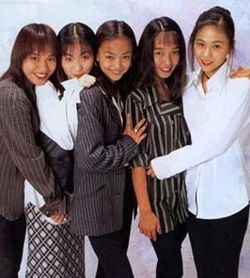
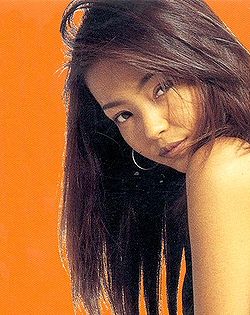
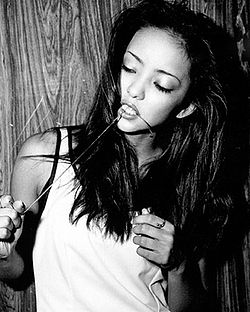
Amuro Namie is from the archipelago prefecture of Okinawa, the southernmost prefecture of Japan. Her mother, Taira Emiko (平良恵美子), was half-Western/European, and she has three siblings. When Amuro was four, her parents divorced and her mother became the sole provider of her and her three children. Amuro was influenced by Janet Jackson when she was young and wanted to dance and sing like her. To fulfill this dream, Amuro tried to enter the prestigious Okinawa Actors' School. However, she did not have enough money at the time to enter the school, so she made a request to the principal of the school, Makino Masayuki, who granted her a scholarship to attend. Amuro faced a commute time of one and a half hours to get to school.
Amuro was made a part of an idol group alongside several of her classmates from the school and formed the group SUPER MONKEYS. The group debuted in February 1992 under the label Toshiba EMI with the single "Koi no Cute Beat / Mister U.S.A.". One member, Makino Anna, was even the principal's daughter. After Makino left, Amuro became the leader of the group; slowly growing in prominence. This is most illustrated by the group changing their name to Amuro Namie with SUPER MONKEYS. The group did not see real success until their cover of "TRY ME ~Watashi wo Shinjite~", which peaked at #8. By the release of "Taiyou no SEASON", the other members' roles were so small that Amuro was solely credited with the song and the other members acted as back-up dancers for her.
Avex - Marriage
In 1995 Amuro and her bandmates moved labels from Toshiba EMI to avex trax after meeting with Komuro Tetsuya and Max Matsuura. However, the SUPER MONKEYS were dissolved in favor of two acts: Amuro as a solo project and the remaining members in a new group called MAX. MAX debuted in May 1995 with "Koisuru Velfarre Dance ~Saturday Night~", which debuted at #91 on the Oricon charts. Amuro and MAX would continue to work together throughout the SWEET 19 BLUES recordings. Amuro first premièred "Body Feels EXIT" at the Avex Dance Matrix '95 TK DANCE CAMP alongside MAX as her dancers. They continued to work together, appearing in Amuro's television performances. MAX would then appear in Amuro's next single "Chase the Chance".
Her later singles "Don't wanna cry" and "You're my sunshine", both #1 singles, solidified her success, culminating in her debut album under avex, entitled SWEET 19 BLUES; not only did it reach #1, but went on to sell over 3.3 million copies, at the time being the best-selling album in Japanese history (a record since beaten by Hikaru Utada's First Love in 1999, with over 7 million copies). Due to Amuro's success and image, she soon became a fashion leader in Japan; followers of her style were labeled as 'Amura' (a pun on her name). The stereotypical 'Amura' had long hair dyed brown, wore short mini-skirts, had thin eyebrows and wore "atsuzoko" thick-soled boots.
Amuro found the greatest success in her career in 1997 with the single "CAN YOU CELEBRATE?". This ballad single was used as the dorama Virgin Road's theme song, and became the #1 single of 1997 due to its massive popularity. Amuro's success during this period also resulted in a massive increase in interest in artists from Okinawa.
On October 22nd, 1997, at the peak of her popularity, Amuro shocked fans and members of the press with the announcement that she had married label-mate SAM, a member of the avex dance group TRF. Furthermore, she announced that she was three months pregnant and announced on a one-year hiatus to focus on her pregnancy. In the meantime, two releases were made to tide fans over: a re-issue of her "CAN YOU CELEBRATE?" single, and her first best-of collection, entitled 181920. On May 19th, 1998, her son, Haruto (温大), was born.
Return to Industry - Tragedy
After giving birth to her son, Amuro returned to the music scene in December 1998 with the ballad "I HAVE NEVER SEEN", used as the dorama Yonige-ya Honpo's theme song, which reached #1 on the charts. Three months later, Amuro released a second single, another ballad called "RESPECT the POWER OF LOVE", on March 17th 1999. However, tragedy struck when on the day of the single's release, her mother was brutally murdered by Amuro's step-uncle Taira Kenji in Okinawa. According to press statements, Taira Emiko was walking with her second husband (Amuro's step-father) when Taira Kenji repeatedly ran over the couple and assaulted them with an axe. While Amuro's step-father survived the ordeal, Taira Kenji later committed suicide after the event. Amuro cancelled all promotions for the single and headed home to Okinawa.
After taking another break from the industry (Amuro later left a message to her fans in January 2000 stating that she had been seriously thinking of retiring, however was convinced not to by the kind words from her fans), Amuro returned with the singles "toi et moi" (Pokémon: The Movie 2000's ending theme song) and "SOMETHING 'BOUT THE KISS". "SOMETHING 'BOUT THE KISS" was Amuro's first real step towards an R&B-oriented sound: the song was the first of hers to be produced by American producer Dallas Austin, known for producing big-name American acts such as Madonna, Janet Jackson, Boys II Men, and TLC, whom Amuro would later collaborate with in future projects.
After her music style began to change from dance-pop to R&B, on top of her private setbacks made public, Amuro's sales had declined significantly, however she had a hit single in 2000 with "NEVER END", which sold over 640,000 copies, and was noted for being the theme song for the 26th G8 Summit, held in Okinawa; Amuro also performed the single at the summit. By the end of 2000, Amuro released two albums within one year, GENIUS 2000 and break the rules, both of which signaled a change in musical direction from her debut. In 2001, Amuro released her first single, "say the word", that featured lyrics written by Amuro herself. Amuro also participated in the 9/11 charity music project song+nation, founded by Komuro Tetsuya, with m-flo rapper VERBAL on the song "lovin' it", released as a single on December 27th; it became the last collaboration between Amuro and Komuro for another 17 years.
SUITE CHIC - STYLE
In late 2001, Amuro was announced to be a part of a collaborative hip-hop/R&B project called SUITE CHIC in which she was the main vocalist. After releasing a special single written for her fans, "I WILL", Amuro's second best-of collection LOVE ENHANCED♥ single collection was released, featuring re-arrangements and re-recordings of her solo singles from 1998 to 2002.
On July 10, 2002, news came that Amuro had divorced her husband, SAM, after five years, who initially received sole custody over their son. At this time, Amuro was dealing with declining popularity among the rise of other Japanese singers, such as Utada Hikaru and labelmate Hamasaki Ayumi, and her much-publicized personal troubles. 2002 saw two more activities from Amuro: the release of "Wishing On The Same Star" (for the film Inochi' originally written by American songwriter Diane Warren) and her debut SUITE CHIC release, "GOOD LIFE / Just Say So". This single did not chart anywhere near where Amuro had charted for the last eight years (only peaking at #35).
2003, however, was a more productive year for Amuro. Between her solo work and her SUITE CHIC project, she released four singles and two albums, most of which continued her dive into R&B and hip-hop. These projects began a long working relationship with Japanese singer-songwriter michico, who would collaborate with Amuro for numerous singles that would define Amuro's style during her R&B era. Her sixth album, STYLE was her first hip-hop and R&B-heavy album and featured no contributions from Komuro Tetsuya. It was the lowest-charting album of her career, peaking at #4, and selling less than a quarter of a million copies in Japan. To promote her the album, Amuro embarked on her first international tour, namie amuro SO CRAZY tour featuring BEST singles 2003-2004, which made stops in Taiwan and South Korea (her only tour that featured South Korea in its schedule). At the end of 2003, her SUITE CHIC side project was dissolved; in future interviews, Amuro expressed interest in reviving the project, an idea that would eventually not materialize. She also appeared on the annual New Year's television special Kohaku Uta Gassen for the last time until 2017, for a total of nine consecutive appearances.
Discography

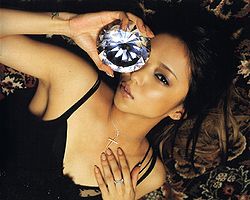
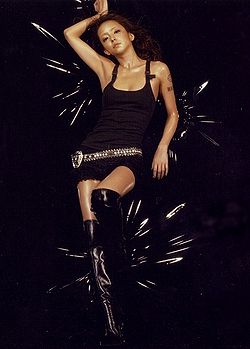
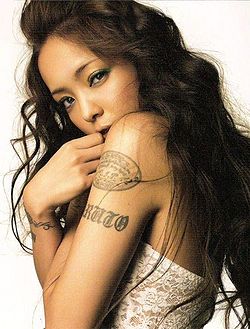


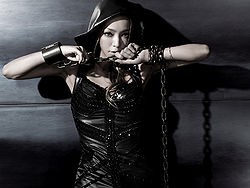





Studio Albums
- [1995.10.16] Dance Tracks Vol.1
- [1996.07.22] SWEET 19 BLUES
- [1997.07.24] Concentration 20
- [2000.01.26] GENIUS 2000
- [2000.12.20] break the rules
- [2003.12.10] STYLE
- [2005.07.13] Queen of Hip-Pop
- [2007.06.27] PLAY
- [2009.12.16] PAST < FUTURE
- [2012.06.27] Uncontrolled
- [2013.07.10] FEEL
- [2015.06.10] _genic
Best Albums
- [1998.01.28] 181920
- [2002.03.13] LOVE ENHANCED ♥ single collection
- [2004.03.31] 181920 & films (re-issue)
- [2008.07.30] BEST FICTION
- [2011.04.27] Checkmate!
- [2014.06.04] Ballada
- [2017.11.08] Finally
Live Albums
- [2013.03.27] namie amuro 5 Major Domes Tour 2012 ~20th Anniversary Best~
- [2014.03.26] namie amuro FEEL tour 2013
- [2015.02.11] namie amuro LIVE STYLE 2014
- [2015.03.11] LIVE STYLE 2014~LIVE Ballada~
- [2016.03.02] namie amuro LIVEGENIC 2015-2016
- [2019.06.16] namie amuro 25th ANNIVERSARY LIVE in OKINAWA at Ginowan Seaside Park 2017.9.16 (Digital Exclusive)
- [2019.06.16] namie amuro Final Tour 2018 ~Finally~ at Tokyo Dome 2018.6.3 (Digital Exclusive)
Singles
- [1995.10.25] Body Feels EXIT
- [1995.12.04] Chase the Chance
- [1996.03.13] Don't wanna cry
- [1996.06.05] You're my sunshine
- [1996.08.21] SWEET 19 BLUES
- [1996.11.27] a walk in the park
- [1997.02.19] CAN YOU CELEBRATE?
- [1997.05.21] How to be a Girl
- [1997.11.27] Dreaming I was dreaming
- [1997.12.25] CAN YOU CELEBRATE? (re-release)
- [1998.12.23] I HAVE NEVER SEEN
- [1999.03.17] RESPECT the POWER OF LOVE
- [1999.07.07] toi et moi
- [1999.09.01] SOMETHING 'BOUT THE KISS
- [2000.01.01] LOVE 2000
- [2000.07.12] NEVER END
- [2000.10.04] PLEASE SMILE AGAIN
- [2001.01.24] think of me / no more tears
- [2001.08.08] Say the word
- [2002.02.14] I WILL
- [2002.09.11] Wishing On The Same Star
- [2003.03.05] shine more
- [2003.07.16] Put 'Em Up
- [2003.10.16] SO CRAZY / Come
- [2004.03.17] ALARM
- [2004.07.22] ALL FOR YOU
- [2004.10.14] GIRL TALK / the SPEED STAR
- [2005.04.06] WANT ME, WANT ME
- [2005.11.16] White Light / Violet Sauce
- [2006.05.17] CAN'T SLEEP, CAN'T EAT, I'M SICK / Ningyo (人魚; Mermaid)
- [2007.01.24] Baby Don't Cry
- [2007.04.04] FUNKY TOWN
- [2008.03.12] 60s 70s 80s
- [2009.03.18] WILD / Dr.
- [2010.07.28] Break It / Get Myself Back
- [2011.07.27] NAKED / Fight Together / Tempest
- [2011.12.07] Sit! Stay! Wait! Down! / Love Story
- [2012.03.21] Go Round / YEAH-OH
- [2013.03.06] Big Boys Cry / Beautiful
- [2014.01.29] TSUKI
- [2014.11.12] BRIGHTER DAY
- [2015.12.02] Red Carpet
- [2016.05.18] Mint
- [2016.07.27] Hero
- [2016.10.26] Dear Diary / Fighter
- [2017.05.31] Just You and I
Digital Singles
- [2012.09.12] Hot Girls -SMIDI CLUB REMIX-
- [2012.10.24] Damage
- [2012.12.05] Damage -80KIDZ Remix-
- [2012.12.22] Love Story (Xmas Music Box Ver.)
- [2013.03.13] Big Boys Cry
- [2013.04.28] Contrail
- [2013.07.03] Hands On Me
- [2013.07.10] Heaven
- [2013.10.02] Neonlight Lipstick
- [2013.10.09] Ballerina
- [2014.11.05] Brighter Day
- [2015.07.01] What I Did for Love (David Guetta feat. Amuro Namie)
- [2015.11.25] Red Carpet
- [2015.11.25] Black Make Up
- [2018.02.11] Hope
- [2018.04.19] Body Feels EXIT
Music Cards
- [2016.12.20] Christmas Wish
Vinyls
- [1995.xx.xx] Body Feels EXIT
- [1996.xx.xx] Chase the Chance / Don't wanna cry / You're my sunshine
- [1997.xx.xx] CAN YOU CELEBRATE?
- [1999.11.19] SOMETHIN 'BOUT THE KISS
- [2000.02.16] Love 2000
- [2001.01.24] no more tears
- [2001.xx.xx] Say the word
- [2014.12.24] Ballada
- [2016.08.19] Mint
- [2016.08.19] Hero
Video Releases
- [1996.11.14] NAMIE AMURO WORLD
- [1996.12.04] AMURO NAMIE FIRST ANNIVERSARY
- [1997.12.03] Namie Amuro Concentration 20 Live in Tokyo Dome
- [1998.07.01] 181920 films
- [1999.11.14] Amuro world ~chase the chance 19 memories~
- [2000.08.18] NAMIE AMURO TOUR "GENIUS 2000"
- [2001.03.07] filmography
- [2002.03.13] 181920 films + filmography
- [2002.12.11] BEST CLIPS
- [2003.11.19] namie amuro tour 2001 break the rules
- [2004.01.28] LOVE ENHANCED♥ single collection
- [2004.01.28] 181920
- [2004.09.23] namie amuro SO CRAZY tour featuring BEST singles 2003-2004
- [2005.12.07] FILMOGRAPHY 2001-2005
- [2006.03.15] Space of Hip-Pop -namie amuro tour 2005
- [2007.02.21] namie amuro BEST tour "Live Style 2006"
- [2008.02.27] NAMIE AMURO PLAY TOUR 2007
- [2009.09.09] namie amuro BEST FICTION TOUR 2008-2009
- [2010.12.15] namie amuro PAST<FUTURE tour 2010
- [2011.12.21] namie amuro LIVE STYLE 2011
- [2013.02.27] namie amuro 5 Major Domes Tour 2012 ~20th Anniversary Best~ (namie amuro 5大ドームTOUR 2012 ~20th Anniversary Best~)
- [2014.02.26] namie amuro FEEL tour 2013
- [2015.02.11] namie amuro LIVE STYLE 2014
- [2015.09.05] Golden Touch -10 Million Views New Edit- (LIVEGENIC Venues Only)
- [2016.03.02] namie amuro LIVEGENIC 2015-2016
- [2017.05.03] namie amuro LIVE STYLE 2016-2017
- [2018.08.29] namie amuro Final Tour 2018 ~Finally~
Compilations / Other
- [1996.10.30] m.c.A・T - "Thunder Party" (#2 "Joy" feat. Amuro Namie)
- [1997.01.01] TK FAMILY - "YOU ARE THE ONE"
- [2001.12.27] Amuro Namie & VERBAL - "lovin' it"
- [2002.03.06] song+nation 2 trance (#4 "lovin' it (tatsumaki remix)")
- [2002.09.19] Inochi: Original Soundtrack (#9 "Wishing On The Same Star (Movie Version)", #10 "Wishing On The Same Star (Movie Version Instrumental)")
- [2003.09.18] ZEEBRA - TOKYO'S FINEST (#12 "AFTER PARTY" feat. Amuro Namie)
- [2005.01.19] ZEEBRA - THE LIVE ANIMAL'03 - TOKYO'S FINEST (#16 "AFTER PARTY" feat. Amuro Namie)
- [2005.03.24] JHETT aka YAKKO for AQUARIUS - JHETT (#3 "Do or Die" feat. Amuro Namie)
- [2005.03.30] SUPER EURO GROOVE (#15 "J-EURO MEGA-MIX")
- [2005.08.24] JHETT aka YAKKO for AQUARIUS - JHETT BLACK EDITION (#2 "Do or Die [BACH LOGIC Remix feat. NORISHAM-X]" feat. Amuro Namie)
- [2006.02.15] ZEEBRA - The New Beginning (#15 "Do What U Gotta Do" feat. AI, Amuro Namie & Mummy-D)
- [2007.03.28] m-flo - COSMICOLOR (#3 "Luvotomy" loves Amuro Namie)
- [2007.09.19] ZEEBRA - ZEEBRA Japan Tour Final "The Live Animal '06 -The New Beginning-" (#19 "Do What U Gotta Do" feat. AI, Amuro Namie & Mummy-D)
- [2007.09.27] m-flo - electriCOLOR -COMPLETE REMIX- (#4 "Luvotomy -Camp Three-o-three remix-" loves Amuro Namie)
- [2007.10.31] m-flo - m-flo Tour 2007 "Cosmicolor" @ Yokohama Arena (#26 "Luvotomy" loves Amuro Namie)
- [2008.05.xx] DOUBLE x Amuro Namie - "BLACK DIAMOND"
- [2008.05.28] DOUBLE - THE BEST COLLABORATIONS (#1 "BLACK DIAMOND")
- [2008.08.06] House Nation Best Gig (#3 "What a Feeling (Shinichi Osawa Remix)")
- [2008.09.17] ZEEBRA - The Anthology (Disc 2 #12 "Do What U Gotta Do" feat. AI, Amuro Namie & Mummy-D)
- [2008.10.29] DJ KAORI - DJ KAORI'S JMIX II (#1 "Baby Don't Cry")
- [2009.01.29] .LOVE (#9 "CAN YOU CELEBRATE?")
- [2009.02.18] Best Hit! Nittere 55 (#7 "I HAVE NEVER SEEN")
- [2009.02.25] Karaage!! (#6 "Baby Don't Cry")
- [2009.03.04] Pikachu The Movie Song Best 1998-2008 (#8 "toi et moi")
- [2009.03.04] 20years 200hits Complete Best + a LOVE HiQualityCD EditionBOX (#12 "Body Feels EXIT", #23 "CAN YOU CELEBRATE?", #37 "RESPECT the POWER OF LOVE", #46 "NEVER END", #92 "ALL FOR YOU", #103 "WANT ME, WANT ME", #118 "CAN'T SLEEP, CAN'T EAT, I'M SICK", #135 "Baby Don't Cry")
- [2009.04.29] ravex - trax (#2 "ROCK U" feat. Amuro Namie)
- [2009.09.02] DJ Caroline D'Amore - J-Girls' Celebrity Mix (#1 "What a Feeling [J-GIRLS' CELEBRITY MIX VER.]")
- [2009.11.04] .LOVE more (#14 "Baby Don't Cry")
- [2009.11.25] DJ KAORI - DJ KAORI'S JMIX III (#6 "WHAT A FEELING")
- [2009.11.25] Hit Songs ~Yasashii Hikari / Unmei no Hito~ Hit Songs orgel collection (#12 "Baby Don't Cry")
- [2010.03.17] Mune Kyun 90's ~Hitori de Kikitai Koi no Uta~ (Disc 2 #1 "SWEET 19 BLUES")
- [2010.03.24] Inuyasha Best Song History (Disc 1 #13 "Come")
- [2010.03.31] AI - "FAKE" feat. Amuro Namie
- [2010.04.21] DJ HASEBE - Woofin Presents "CANDYMAN" Mixed by DJ HASEBE (#24 "Ups & Downs" duet with Nao'ymt)
- [2010.07.21] Suzuki Ami - BLOOMING (#6 ROCK U feat. Amuro Namie)
- [2010.12.01] AI - THE LAST A.I. (#1 "FAKE" feat. Amuro Namie)
- [2011.03.16] VERBAL - VISIONAIR (#2 "BLACK OUT" feat. Lil Wayne & Amuro Namie)
- [2011.10.05] DOUBLE - WOMAN (#14 "BLACK DIAMOND ~TinyVoice Electr!ck Remix~")
- [2012.01.11] .LOVE tender (#9 "ALL FOR YOU")
- [2012.03.07] Dramatic Tunes (Disc 2 #1 "Baby Don't Cry")
- [2012.10.17] MILLION ~BEST OF 90's J-POP~ BLUE (#1 "CAN YOU CELEBRATE?")
- [2013.06.12] TLC - "Waterfalls (20th Anniversary Version)"
- [2013.06.19] TLC - TLC 20 ~20th Anniversary Hits~ (#1 "Waterfalls" with Namie Amuro)
- [2013.09.25] Komuro Tetsuya - DEBF EDM 2013 SUMMER (#8 "You're my sunshine (2013 SUMMER)")
- [2014.04.02] Hirai Ken - "Grotesque" feat. Amuro Namie
- [2014.05.28] DOUBLE - SINGLE BEST (Disc 2 #10 "BLACK DIAMOND")
- [2014.11.15] Jolin Tsai - PLAY (#5 "I'm Not Yours" feat. Amuro Namie)
- [2015.07.01] David Guetta - "What I Did for Love" feat. Amuro Namie
- [2015.09.16] Crystal Kay - "REVOLUTION" feat. Amuro Namie
- [2015.09.30] SHOW-YA - PROGRESS (#12 "Genkai LOVERS" feat. Namie Amuro)
- [2015.11.25] AI - THE BEST (#12 "FAKE" feat. Amuro Namie)
- [2015.12.16] Crystal Kay - Shine (#5 "REVOLUTION" feat. Amuro Name)
- [2016.11.02] AI - THE FEAT. BEST (CD2 #4 Amuro Namie - "Wonder Woman" feat. AI & Tsuchiya Anna, #7 "FAKE [BACHLOGIC Remix]" feat. Amuro Namie)
- [2018.01.17] m-flo - "BACK2THEFUTUREEP1" (#2 "Luvotomy (TeddyLoid Remix)")
- [2018.08.01] DOUBLE - Latest Single Best (Disc 2 - #11 "BLACK DIAMOND" / DOUBLE & Amuro Namie)
- [2019.10.16] t-Ace - Sweet 19 Blues ~Ore ni wa Toi~ feat. Amuro Namie
Filmography
Dramas
- [1994] Toki wo Kakeru Shoujo (時をかける少女)
- [1996] That's Cunning! Shijou Saidai no Sakusen? (That's カンニング! 史上最大の作戦?)
- [2000] Yonigeya Honpo (夜逃げ屋本舗)
Publications
Books
- [2009.10] Pocket Amuro Namie
Photobooks
- [1996.11.10] 19770920
Band Scores
- [2014.07.28] Piano Solo Amuro Namie "Ballada"
Video Games
- [1997.xx.xx] Digital Dance Mix Vol. 1 Namie Amuro
External Links
| |||||||||||||||||||||||||||||||||||||||



